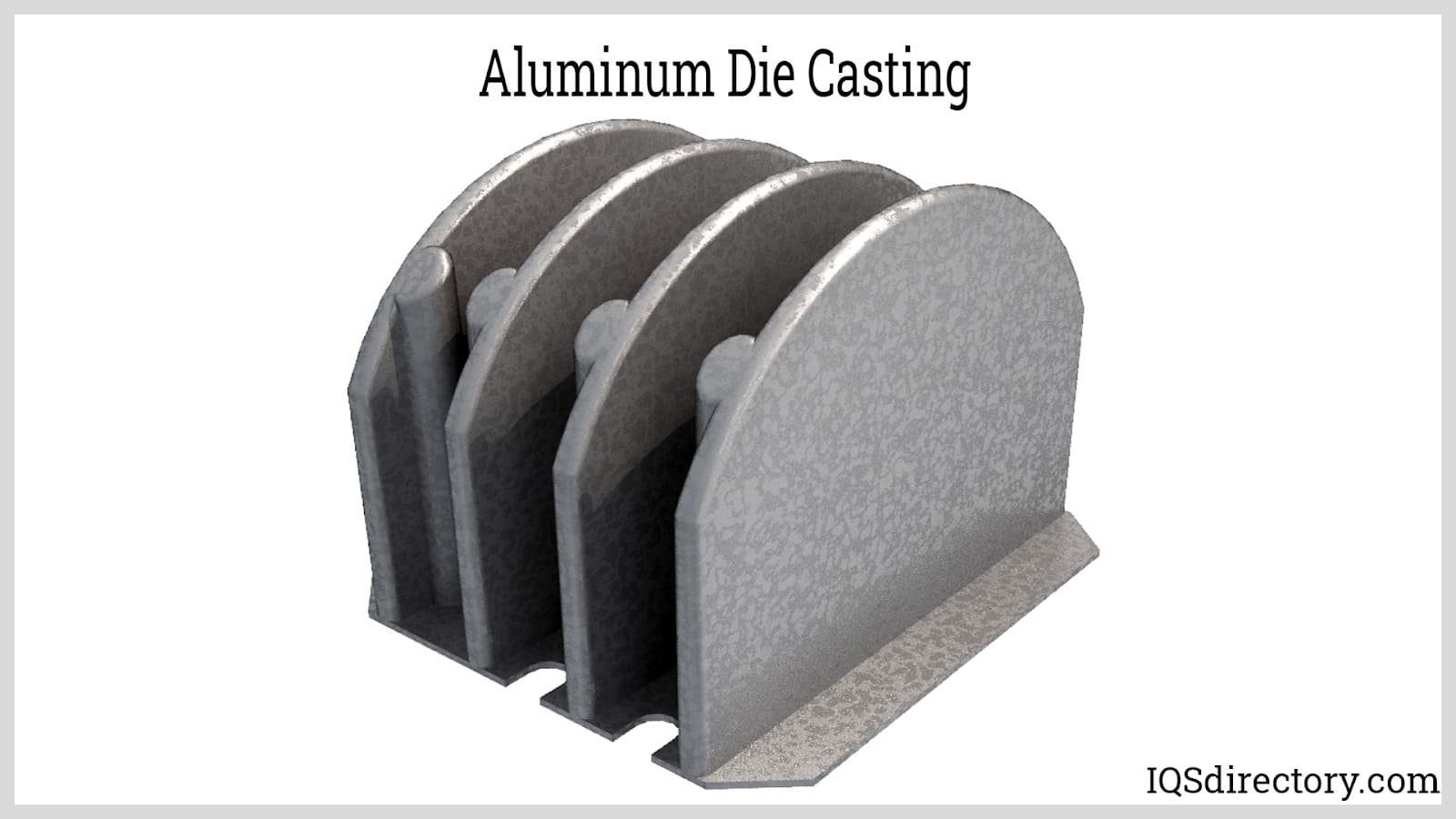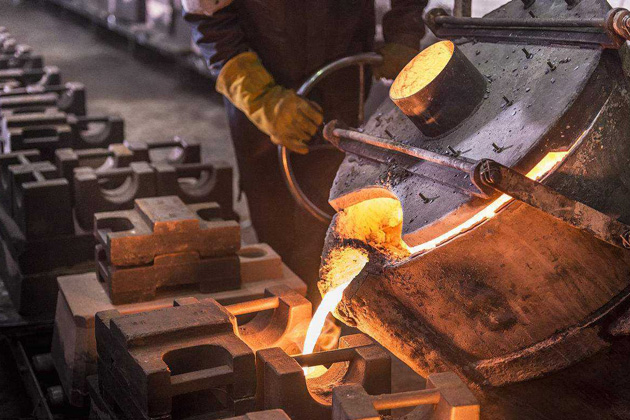Finding out what makes Aluminum Foundry Wisconsin beneficial in casting
Wiki Article
Just How Aluminum Foundry Contributes to Developments in Aerospace Design
Aluminum factories are integral to improvements in aerospace engineering. They generate lightweight, high-strength elements that are necessary for contemporary aircraft. With innovative spreading methods, these factories create complicated geometries that boost structural stability. Additionally, the development of remarkable Aluminum alloys sustains the industry's focus on gas effectiveness and sustainability. Challenges stay in the production procedure. Understanding these aspects discloses the profound impact of Aluminum on air travel's future.The Importance of Lightweight Materials in Aerospace Layout
As the aerospace industry continues to progress, the value of light-weight materials comes to be increasingly obvious. The demand for performance and sustainability drives engineers to focus on using materials that reduce general weight without compromising structural honesty. Light-weight products, specifically Aluminum, play a vital role in improving gas performance, boosting haul ability, and enhancing the general performance of aircraft.Moreover, the integration of these materials allows for cutting-edge layouts, making it possible for producers to develop even more aerodynamic forms that can withstand severe problems. The reduction in weight not only reduces functional costs yet likewise adds to a lowered environmental impact, lining up with global initiatives towards sustainability in aviation.
Advanced Casting Techniques in Aluminum Foundries
Advanced casting strategies in Aluminum foundries play a crucial duty in aerospace engineering by making it possible for the manufacturing of specific and light-weight parts. Developments in mold layout and accuracy casting procedures are crucial in accomplishing perfect efficiency and structural honesty. In addition, the growth of light-weight alloys boosts the general efficiency and effectiveness of aerospace applications.Cutting-edge Mold And Mildew Layout
Cutting-edge mold design plays a crucial function in the effectiveness and efficiency of Aluminum factories, particularly within the aerospace market. By leveraging sophisticated materials and strategies, contemporary mold and mildews can be engineered to stand up to high temperatures and stress, ensuring peak performance throughout the spreading procedure. These layouts typically integrate complicated geometries that enable for the production of lightweight yet structurally audio components, necessary for aerospace applications. In addition, using computer-aided style (CAD) software program assists in precise modeling, enabling foundries to improve and simulate mold and mildew styles prior to physical production begins. This not just improves the quality of actors parts yet also decreases waste and lead times, leading to substantial expense financial savings. In general, innovative mold layout is a keystone of progression in Aluminum Foundry innovation for aerospace design.Accuracy Casting Processes
The performance of ingenious mold styles seamlessly incorporates with accuracy casting processes, which are necessary for generating top quality Aluminum parts in aerospace design. These processes, consisting of sand casting, pass away casting, and investment spreading, ensure the development of complex geometries with tight resistances. Advanced methods like vacuum cleaner spreading and pressure pass away casting enhance the integrity and surface area finish of the end products. Accuracy spreading minimizes product waste while taking full advantage of the mechanical buildings of Aluminum, important for aerospace applications. On top of that, employing real-time surveillance and progressed simulation tools throughout the casting procedure enables for prompt adjustments, resulting in enhanced top quality control. Jointly, these precision spreading procedures setting Aluminum factories at the forefront of aerospace development, supporting the market's need for reliability and efficiency.Lightweight Alloy Development
As aerospace designers seek to enhance fuel effectiveness and efficiency, light-weight alloy advancement comes to be an important emphasis in Aluminum shops. These shops employ innovative spreading techniques to create alloys that supply premium strength-to-weight proportions. Advancements in alloy make-up, including the unification of components like lithium and magnesium, allow the production of materials that hold up against extreme conditions while minimizing total airplane weight. Strategies such as die spreading and financial investment spreading assist in the precision manufacturing of complex shapes, which are critical for aerospace applications. Furthermore, ongoing research aims to maximize these alloys for improved mechanical properties and boosted resilience. By focusing on light-weight alloy advancement, Aluminum foundries considerably contribute to the development of aerospace engineering, paving the method for more efficient and lasting airplane designs.
Enhancing Structural Honesty Via Aluminum Components
Aluminum parts supply substantial benefits in improving structural integrity within aerospace engineering. Their light-weight nature contributes to general efficiency while maintaining toughness, which is essential for airplane performance. Additionally, the stress resistance homes of Aluminum help assure the longevity and integrity of aerospace structures under various functional conditions.
Light-weight Product Perks
While conventional materials typically compromise weight for toughness, using Aluminum components in aerospace design uses significant benefits in structural honesty. Aluminum's lightweight nature contributes to general design performance, enabling for more streamlined airplane that eat much less gas, consequently enhancing sustainability. The product's exceptional strength-to-weight ratio warranties that elements maintain toughness without adding unneeded mass. This high quality fosters boosted performance and agility in flight, in addition to enhanced payload capabilities. Furthermore, Aluminum's resistance to corrosion lengthens the life-span of aerospace structures, decreasing upkeep prices and enhancing safety and security. As producers significantly adopt Aluminum alloys, the aerospace market experiences a transformative change in the direction of much more efficient and effective design solutions that prioritize both performance and ecological duty.Stress Resistance Features
Although different products have distinct residential properties, Aluminum's remarkable stress resistance stands apart as a vital variable in boosting the structural integrity of aerospace components. This resistance plays a crucial function in making sure that airplane can stand up to numerous functional anxieties, consisting of tiredness, effect, and environmental conditions. Aluminum alloys, particularly engineered for aerospace applications, exhibit high tensile strength while maintaining light-weight features, making it possible for designers to create much more efficient structures - Aluminum Foundry. Additionally, the capacity of Aluminum to withstand cyclic loading without considerable contortion adds to the durability and reliability of aerospace parts. As innovations proceed in Aluminum Foundry methods, the advancement of stress-resistant Aluminum components promises more renovations in performance, safety, and efficiency across the aerospace industry, strengthening Aluminum's duty as a recommended material in modern designGas Efficiency Improvements Driven by Aluminum Innovations
As the aerospace sector seeks to enhance fuel efficiency, innovative usages of Aluminum have actually emerged as an essential remedy. Aluminum's lightweight nature especially decreases airplane weight, enabling for reduced fuel intake during trip. This reduction in weight is crucial, as even small decreases can cause substantial enhancements in overall fuel economy.Advanced Aluminum alloys, created for enhanced stamina and resilience, make it possible for producers to develop parts that maintain structural honesty while lessening mass - Aluminum Foundry. Furthermore, the combination of Aluminum in airframes and Continue engine elements promotes improved aerodynamics, adding to reduced drag and enhanced performance
The adoption of Aluminum in aerospace not only satisfies the need for fuel-efficient layout however additionally straightens with regulatory pressures for lower discharges. As these technologies remain to develop, they play a considerable function in establishing brand-new standards for gas performance, making certain that the aerospace sector can meet growing environmental and financial obstacles.

The Duty of Aluminum in Sustainable Aeronautics Practices
The boosting focus on sustainable aviation techniques has actually positioned Aluminum as an important product in the quest for greener aircraft design. Recognized for its light-weight properties, Aluminum considerably lowers airplane weight, causing lower gas intake and discharges. Its recyclability even more enhances its sustainability account, as Aluminum can be recycled indefinitely without loss of top quality. This characteristic supports a round economic climate within the aviation sector, decreasing waste and source depletion.Developments in Aluminum alloys have enhanced their strength and rust resistance, allowing for longer solution life and lowered maintenance requirements. These advancements promote the growth of extra efficient airplane structures, adding to overall sustainability initiatives. Additionally, Aluminum's thermal conductivity plays an essential role in energy-efficient layouts, boosting systems such as warm exchangers. Jointly, these attributes highlight Aluminum's crucial function ahead of time lasting aviation, lining up with international initiatives aimed at lowering the environmental effect of flight.
Challenges Faced by Aluminum Foundries in Aerospace Production
While Aluminum foundries play a necessary role in aerospace manufacturing, they encounter significant difficulties that can affect manufacturing efficiency and quality. One major challenge is the rigid top quality control standards needed in the aerospace sector. Any kind of defect can jeopardize safety and efficiency, demanding strenuous evaluation processes that prolong manufacturing timelines. In addition, shops often emulate changing basic material expenses, which can influence rates and profitability. The intricacy of Aluminum alloys utilized in aerospace applications more complicates the production process, as exact formulas are vital for attaining preferred mechanical homes. Moreover, competent labor shortages hinder the ability to keep top quality production degrees. Ecological laws impose restrictions on exhausts and waste administration, requiring shops to invest in lasting methods, which can be cost-prohibitive. These factors jointly create a landscape where Aluminum shops should continuously adjust to meet the progressing demands of aerospace production while making certain security and conformity.Future Patterns in Aluminum Applications for Aerospace Design
With innovations in modern technology and boosting needs for effectiveness, the future of Aluminum applications in aerospace engineering is positioned for significant makeover. The combination of cutting-edge Aluminum alloys and composites is anticipated to improve strength-to-weight proportions, resulting in even more fuel-efficient aircraft layouts. In addition, innovations in additive manufacturing strategies will enable the manufacturing of intricate Aluminum structures that were previously impossible, maximizing performance and minimizing waste.
Sustainable methods will certainly play an essential role, with a growing emphasis on reusing Aluminum to reduce environmental effect. The aerospace market is most likely to accept smarter producing processes, such as automation and fabricated knowledge, guaranteeing greater top quality and accuracy in Aluminum parts. Collaborations in between Aluminum foundries and aerospace business will certainly cultivate study and advancement, paving the way for new applications that fulfill the stringent requirements of modern-day aerospace design. Overall, the future looks guaranteeing for Aluminum's role in shaping the skies
Often Asked Questions
What Are the Ecological Effects of Aluminum Production in Aerospace?
The ecological influences of Aluminum production in aerospace consist of substantial energy consumption, greenhouse gas exhausts, and environment disruption. In addition, mining processes can lead to dirt destruction and water contamination, increasing issues concerning sustainability and environmental balance.Just How Does Aluminum Compare to Various Other Materials in Aerospace Applications?
Aluminum offers an unique mix of lightweight homes, rust resistance, and cost-effectiveness contrasted to other materials. Its high strength-to-weight ratio makes it particularly useful for aerospace applications, improving fuel efficiency and total efficiency in airplane style.What Credentials Do Aluminum Foundry Workers Need for Aerospace Projects?
Aluminum Foundry workers call for specific training in metallurgy and spreading techniques, together with knowledge of aerospace market criteria. Accreditations in quality assurance and safety methods are likewise vital to guarantee conformity with rigorous aerospace project demands.Exist Any Kind Of Security Problems With Making Use Of Aluminum in Aerospace Engineering?
Safety and security concerns relating to Aluminum in aerospace design consist of susceptibility to anxiety, corrosion, and fatigue fractures. Appropriate therapy and alloy selection are crucial to reduce these dangers, making sure architectural honesty and total safety and security in aerospace applications.How Does Aluminum Recycling Advantage the Aerospace Sector?
Aluminum reusing greatly profits the aerospace sector by decreasing material expenses, reducing environmental influence, and preserving power. get more This sustainable method enhances the industry's performance while advertising using lightweight, high-performance components in airplane production.Advanced spreading methods in Aluminum factories play a crucial role in aerospace design by Going Here making it possible for the manufacturing of exact and light-weight elements. Ingenious mold and mildew style plays a crucial duty in the efficiency and performance of Aluminum shops, particularly within the aerospace field. As aerospace engineers seek to enhance fuel effectiveness and efficiency, light-weight alloy advancement comes to be an essential emphasis in Aluminum foundries. Aluminum alloys, especially engineered for aerospace applications, display high tensile toughness while preserving light-weight attributes, enabling designers to design extra effective frameworks. Partnerships between Aluminum factories and aerospace companies will certainly foster study and advancement, leading the way for new applications that fulfill the rigorous demands of modern aerospace design.
Report this wiki page